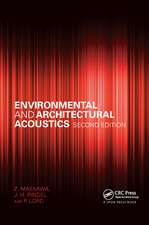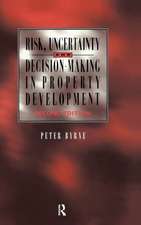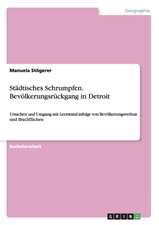Time Frames: Conservation Policies for Twentieth-Century Architectural Heritage
Editat de Ugo Carughi, Massimo Visoneen Limba Engleză Hardback – 7 apr 2017
| Toate formatele și edițiile | Preț | Express |
|---|---|---|
| Paperback (1) | 346.11 lei 43-57 zile | |
| Taylor & Francis – 18 sep 2018 | 346.11 lei 43-57 zile | |
| Hardback (1) | 1033.12 lei 43-57 zile | |
| Taylor & Francis – 7 apr 2017 | 1033.12 lei 43-57 zile |
Preț: 1033.12 lei
Preț vechi: 1259.90 lei
-18% Nou
Puncte Express: 1550
Preț estimativ în valută:
197.75€ • 214.87$ • 166.22£
197.75€ • 214.87$ • 166.22£
Carte tipărită la comandă
Livrare economică 21 aprilie-05 mai
Preluare comenzi: 021 569.72.76
Specificații
ISBN-13: 9781472489296
ISBN-10: 1472489292
Pagini: 532
Ilustrații: 167
Dimensiuni: 174 x 246 mm
Greutate: 1.4 kg
Ediția:1
Editura: Taylor & Francis
Colecția Routledge
Locul publicării:Oxford, United Kingdom
ISBN-10: 1472489292
Pagini: 532
Ilustrații: 167
Dimensiuni: 174 x 246 mm
Greutate: 1.4 kg
Ediția:1
Editura: Taylor & Francis
Colecția Routledge
Locul publicării:Oxford, United Kingdom
Cuprins
Preface (Ana Tostões), Notes on Contributors Acknowledgments, Introduction, Part I: Conservation Policies for Twentieth Century Architectural Heritage, 1. The Shadow Line: Architecture between Time and History (Massimo Visone), 2. Contemporary Architecture and the Idea of Protection (Ugo Carughi), 3. Africa: Algeria (Samira Debache Benzagouta, Yasser Nassim Benzagouta), Angola (Roberto Goycoolea, Paz Núñez), Democratic Republic of the Congo (Johan Lagae), Egypt (Ola Seif), Eritrea (Medhanie T. Mariam), Ethiopia (Fasil Giorghis), Ghana (Elisa Dainese), Kenya (Jacob Barua), Morocco (Abderrahim Kassou), Mozambique (José Manuel Fernandes), Nigeria (Lanre Shasore, John Godwin), Senegal (Joseph L. Underwood), South Africa (Brendan Hart, Yasmin Mayat, Tanzania (Antoni S. Folkers, Berend van der Lans), Tunisia (Faten Rouissi, Insaf K. Zaghouani), 4. Americas: Argentina (Graciela María Viñuales), Brazil (Paulo Ormindo David de Azevedo), Canada (Michael McClelland), Chile (Pedro Bannen, Macarena Ibarra; Colombia Olimpia Niglio), Costa Rica (Andrés Fernández), Cuba (María Victoria Zardoya Loureda), Ecuador (Fernando Carrión Mena, Isabel Rohn), Mexico (Margarita Segarra Lagunes), Peru (Judith Soria, Rodrigo Córdova), United States of America (Carol D. Shull; Uruguay (Alejandro Veneziano), Venezuela (Giuseppe Rago), 5. Asia: Bahrain (Britta Rudolff, Eva Battis) Bangladesh (Qazi Azizul Mowla), China (Lorenzo Miccoli), Hong Kong (Lynne DiStefano, Ho Yin Lee), India (Nalini Thakur), Indonesia (Gunawan Tjahjono), Iran (Hassan Osanloo), Israel (Nir Mualam, Rachelle Alterman), Japan (Ewa Kawamura), Jordan (Leen A. Fakhoury), Kazakhstan (Gulnara Abdrassilova, Yerkebulat Tokmagambetov), Lebanon (Jean-Pierre El Asmar), Macau (Manfredo Manfredini), Malaysia (Yahaya Ahmad, Hasniyati Hamzah), Oman (Naima Benkari), Pakistan (Zainul Abedin, Mariam Sher Mohammed), Philippines (Romolo Valentino Nati, Naidyl Isis Bautista), Qatar (Timothy Makower), Singapore (Kelvin Ang), South Korea (Fabio Dacarro), Thailand (Koompong Noobanjong), United Arab Emirates (Paolo Caratelli), Vietnam (Nguyen Minh Hoa), 6. Australasia: Australia (Noni Boyd), New Zealand (Julia Gatley), 7. Europe: Albania (Frida Pashako), Andorra (Angelina Paulicelli), Armenia (Maurizio Boriani), Austria (Francesca Capano), Azerbaijan (Rufat Nuriyev), Belarus (Armen S. Sardarov), Belgium (Thomas Coomans), Bosnia and Herzegovina (Amra Hadžimuhamedović, Adi Ćorović), Bulgaria (Emilia Kaleva; Croatia Vedran Ivanković), Cyprus (Maria Philokyprou), Czech Republic (Josef Štulc; Denmark Claudia Aveta), Estonia (Oliver Orro), Finland (Anna-Maija Ylimaula), France (Emilie d’Orgeix) Georgia (Vladimer (Lado) Vardosanidze), Germany (Hans-Rudolf Meier; Greece (Andreas Giacumacatos), Hungary (Péter Klaniczay), Iceland (Pétur H. Ármannsson, Nikulás Úlfar Másson), Ireland (Willie Cumming), Italy (Ugo Carughi), Kosovo (Ljubiša Folić), Latvia (Uģis Bratuškins), Liechtenstein (Riccardo de Martino), Lithuania (Jurate Jureviciene), Luxembourg (Alex Langini), Macedonia (Valentino Dimitrovki), Malta (Joseph Magro Conti), Moldova (Sili Anatolie), Montenegro (Slavica Stamatovic, Rifat Alihodzic), Netherlands (Ciro Birra), Norway (Nils Marstein), Poland (Grzegorz Grajewski, Jadwiga Urbanik), Portugal (Inês Meira Araújo), Romania (Anda-Lucia Spânu), Russia (Anna Bronovitskaya), San Marino (Leo Marino Morganti), Serbia (Мirјаnа Rоtеr-Blаgојеvić, Маrkо Nikоlić), Slovakia (Viera Dvořáková), Slovenia (Jelka Pirkovič), Spain (María Pilar García Cuetos), Sweden (Claes Caldenby), Switzerland (Giulia Marino), Turkey (Nilüfer Baturayoğlu Yöney, Yıldız Salman, Ebru Omay Polat), Ukraine (Fedir Gontsa), United Kingdom: England (Elain Harwood), Northern Ireland (Méabh McStravick), Scotland (Dawn McDowell), Wales (Judith Alfrey), Vatican City State (Anna Maria Voltan), Part II: Short Critical Lexicography: Identity 8. West African Modernism and Change (Ola Uduku), 9. Evolution in the Arabic Region (Ashraf M. Salama), 10. Humanism. An Italian Tale (Franco Purini), 11. Post-tradition in Japanese Culture (Mizuko Ugo), Heritage 12. Industrial Architecture (Roberto Parisi), 13. Landscape Architecture (Michael Jakob), 14. Middle-Class Housing (Filippo De Pieri), Memory 15. Cultural Institutions (Teresita Scalco), 16. Architectural Photography (Valeria Carullo), Conservation 17. Laws (Roberta Grignolo), 18. Technology (Rosalia Vittorini), Economy 19. Economic Analysis (Amedeo Di Maio), Index
Notă biografică
Ugo Carughi is an architect, Chair of Docomomo Italia Onlus and former Director at the Superintendence of Naples. He was a member of the Committee for the National Plan for the modern architectural archives and the twentieth-century architecture of the Ministry of Cultural Heritage and Activities. He has conducted numerous restorations of monumental buildings and won the prize in the competition for pilot projects for the conservation of monuments organized by the EEC (1988). He has taught at the University of Naples Federico II, at the 2nd University of Naples, University of Basilicata, and at the University Suor Orsola Benincasa in Naples. He is author and editor of many publications on the history and conservation of architecture. Amongst his main books is Maledetti Vincoli. La tutela dell’architettura contemporanea (2012).
Massimo Visone is Adjunct Professor in History of Architecture at the University of Naples Federico II. His main research interests focus on the history of gardens and landscapes, urban iconography and architectural historiography. Amongst his main publications are many studies on the history of architecture and the city of Naples and its surroundings, the history of art and a significant edited volume on protection policies for twentieth-century architecture worldwide (Maledetti vincoli: Part II 2012).
Massimo Visone is Adjunct Professor in History of Architecture at the University of Naples Federico II. His main research interests focus on the history of gardens and landscapes, urban iconography and architectural historiography. Amongst his main publications are many studies on the history of architecture and the city of Naples and its surroundings, the history of art and a significant edited volume on protection policies for twentieth-century architecture worldwide (Maledetti vincoli: Part II 2012).
Recenzii
‘This extensive work is a critical examination and comparison of heritage protection laws and policies from all continents and many different countries, with special reference to the architecture of the 20th century. The main focus is on contemporary rather than historical heritage, although readers’ involvement in broader issues will grow steadily as they follow the spontaneous progression from the single monument across to broader urban and socio-economic contexts. The framework within which this investigation and reflection upon Time and History takes place is that period of time which is laid down by many legislations for the proper recognition and consequent protection of heritage. The pattern that emerges reveals a wide variety of different models and sensibilities, enabling us to fully comprehend the motivation behind heritage protection and the tangible and intangible values targeted by said protection.’ - Giovanni Carbonara, Emeritus Professor, Sapienza – University of Rome, Italy
'At the beginning of the 21st century, the architecture of the previous century has obtained international recognition as heritage. Time Frames offers an authoritative reference on the state of the art, giving the first comprehensive overview on the conservation rules and current protection policies of modern heritage in over 100 countries. While the Modern Movement in Architecture and Urban Planning had its origins in the Western World, it soon spread to other regions. Consequently, in addition to Europeans and North Americans, the leading architects in Latin America, Asia, Africa, and in the Arab region, have created master pieces already recognized in UNESCO’s World Heritage List. Further to the country profiles, the publication also includes general articles by conservation professionals on issues dealing with the identity and recognition of modern architecture.' – Jukka Jokilehto, Honorary Visiting Professor - University of York, UK
'Time Frames: Conservation Policies for Twentieth-Century Architectural heritage, edited by Ugo Carughi and Massimo Visone, is advisable for all those interested in the issues related to the contemporary architecture policy selection.' - Raffaele Amore, University of Naples "Federico II", Italy
'At the beginning of the 21st century, the architecture of the previous century has obtained international recognition as heritage. Time Frames offers an authoritative reference on the state of the art, giving the first comprehensive overview on the conservation rules and current protection policies of modern heritage in over 100 countries. While the Modern Movement in Architecture and Urban Planning had its origins in the Western World, it soon spread to other regions. Consequently, in addition to Europeans and North Americans, the leading architects in Latin America, Asia, Africa, and in the Arab region, have created master pieces already recognized in UNESCO’s World Heritage List. Further to the country profiles, the publication also includes general articles by conservation professionals on issues dealing with the identity and recognition of modern architecture.' – Jukka Jokilehto, Honorary Visiting Professor - University of York, UK
'Time Frames: Conservation Policies for Twentieth-Century Architectural heritage, edited by Ugo Carughi and Massimo Visone, is advisable for all those interested in the issues related to the contemporary architecture policy selection.' - Raffaele Amore, University of Naples "Federico II", Italy
Descriere
Time Frames provides a reconnaissance on the conservation rules and current protection policies in more than 100 countries, with particular attention to the emerging nations and 20th century architecture.



















